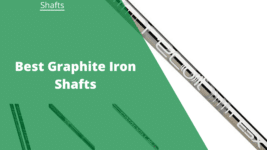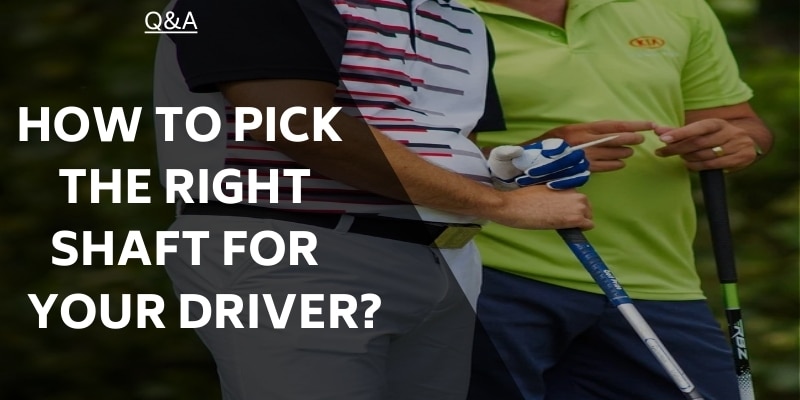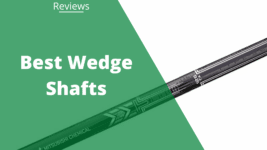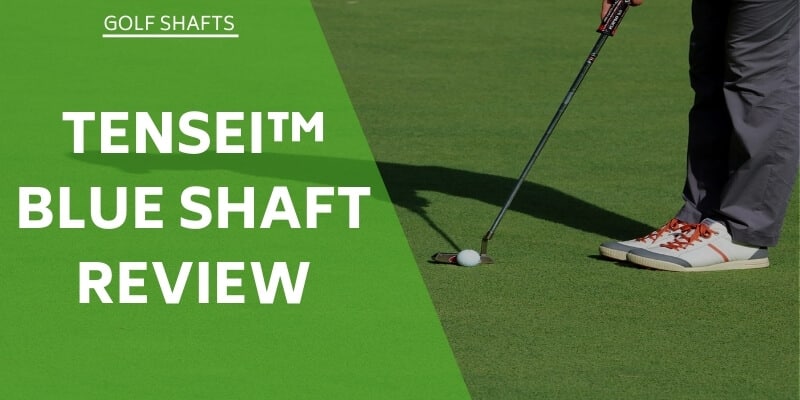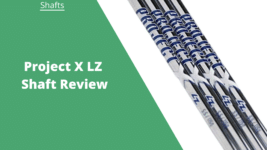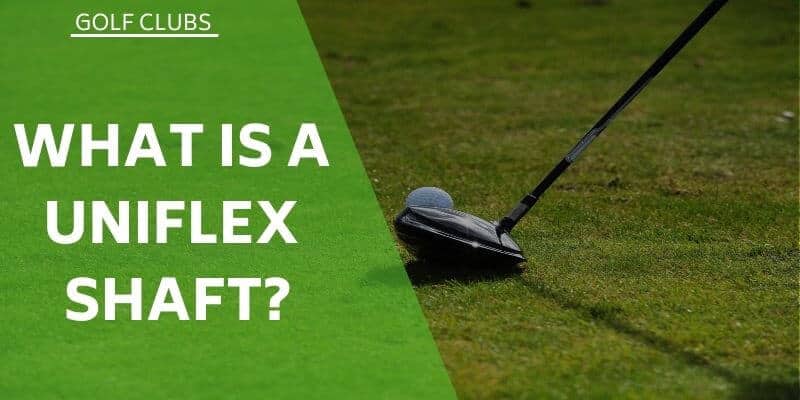The best iron shafts could improve your iron play. If you’re upset with your current play, the first thing most people blame is the club head. But don’t rush out and buy a new set without first investigating whether or not your shafts match your swing.
In many respects, your shafts will be more important than the club head you choose, so having the best golf shaft for irons is crucial.
Here are the best golf iron shafts:
- Project X New LZ Steel — Best Overall Steel Shaft
- Dynamic Gold True Temper Shaft — Best for Low-Handicappers
- Nippon NS Pro 950GH NEO Steel Iron Shaft — Best for Game-Improvement Irons
- KBS Tour Iron Shafts — Best for Mid-Handicappers
- Fujikura PRO Series 95i Graphite Iron Shafts — Best Overall Graphite Shaft
- Mitsubishi MMT Taper 105 Iron Shafts – Best for Switching From Steel Shafts
- UST Mamiya Recoil ESX — Best for Distance
- Mitsubishi Tensei AV Silver 70 – Most Versatile
- Pro Taylor Fit Nano Graphite Shafts — Most Affordable
This depends on many factors, but predominantly, it’s your swing. The faster your swing speed, the stiffer of a shaft you should choose. Of course, you have to consider other characteristics too. Your swing speed will vary depending on the weight of the shafts you use. All iron shafts are separated by two materials: steel and graphite. Choosing the correct type for your ability is crucial.
Generally speaking, steel shafts are heavier, so they require a faster swing, but they have the benefit of offering more control. Graphite shafts, on the other hand, are lighter, so slower swingers such as ladies and seniors can make great use of them.
However, that’s just a brief look into iron shafts. In this post, we compare our favorite models for 2024 and provide a helpful guide for your convenience.
Top 3 Golf Iron Shafts
1. Project X New LZ Steel
- Great for mid-low handicappers
- Offers high launch
- Improved shaft loading technology for more consistent distance
2. Fujikura PRO Series 95i Graphite Iron Shafts
- Great for steel shaft players who want to switch to graphite
- Lighter than steel to add distance
- Firm tip section feels like a steel shaft
3. Dynamic Gold True Temper Shaft
- Great for low-handicap players
- Creates a low and penetrating ball flight
- Used by many of the top brands in all of golf
Why You Should Trust Us
Our team spends thousands of hours trying out and researching golf equipment to help you take your game to the next level. Here’s our product review process.
We can bring these reviews to you through the small commissions we earn if you buy through the links below.
How We Reviewed These Products
Golfspan only shares equipment and brands we trust.
I’m a PGA-certified golfer and instructor, and I thoroughly researched and evaluated the iron shafts in this article. Then an editor reviewed and fact-checked the review. Finally, we conduct regular content audits to update and revise our reviews to ensure you receive the latest information.
When researching for this review, I considered the following criteria:
- Distance
- Accuracy
- Feel
- Spin
- Launch
- Cost
Read Next: The Ultimate Guide to Golf Shafts
Best Shafts for Irons: In-Depth Reviews
This section is broken up into two parts:
- Steel shafts
- Graphite shafts
Steel will generally benefit those with a driver swing speed of over 95 mph. Graphite is better for everyone else.
Best Steel Iron Shafts
1. Project X New LZ Steel — Best Overall Steel Shaft
| Kickpoint | Mid |
| Weight | 110g – 125g |
| Tip Size | 0.355” |
| Material | Steel |
| Handicap | Low-mid |
Pros
- Suited to a wide range of golfers
- Improved loading technology
- Optimize ball flight
- Used by many tour pros
Cons
- Not helpful with gaining higher launch
- Not a good option for fast swingers
- Expensive
Project X shafts have been popular since the day they were introduced many years ago. They are best known for their versatility in being able to suit many different levels of golfers. This new release builds on their past success and is packed with more technology and research than any other version.
The ‘LZ’ stands for ‘loading zone,’ which refers to a new process that loads the shaft more efficiently on your downswing. Project X claims this adds 7% more energy to help provide lift and distance to all irons, and in our experience, we can’t argue. We did notice a slight increase for both when testing.
The launch angle is around the same as the KBS Tour, yet it easily beats out this shaft when it comes to smash factor, making it a better choice in our opinion.
I think you’ll find these shafts particularly helpful on those days when you don’t feel quite as flexible as you usually do. They are a huge help on the first few holes while you’re just getting settled, and on colder days.
Read our full review of the Project X LZ shafts here.
Rating: 4.75
2. Dynamic Gold True Temper Shaft — Best for Low-Handicappers
| Kickpoint | High |
| Weight | 127g – 130g |
| Tip Size | 0.355” |
| Material | Steel |
| Handicap | Low |
Pros
- Lowers trajectory
- Reduces spin on longer clubs
- Prevents ballooning iron shots
- Allows for shot shaping in both directions
Cons
- Not great for high-handicappers
- Spin can be tough to control at times
Getting a lower and controlled ball flight is what single-digit handicappers look for. This is because there’s less of a chance that wind will affect it, and they can produce enough spin to stop the ball on the green regardless of height.
The shaft plays a massive role in making this happen, and the best iron shaft for the job is the Dynamic Gold True Temper. I found the high kick point prevents ballooning irons, so even while the ball loses speed, it still travels with purpose on the downside of your shot’s apex.
These shafts are also on the heavier side to accommodate faster swing speeds. They are variably weighted, meaning the longer irons are slightly lighter, and the shorter ones are a bit heavier. This allows skilled players to maintain the same swing tempo throughout their entire iron set. In fact, these are the heaviest shafts on this list, only the KBS Tour irons match them at 130g, however, their lighter shafts are 110g compared to 127g.
Rating: 4.5
3. Nippon NS Pro 950GH NEO Steel Iron Shaft — Best for Game-Improvement Irons
| Kickpoint | Mid |
| Weight | 94g – 104g |
| Tip Size | 0.355” |
| Material | Steel |
| Handicap | Mid |
Pros
- Versatile shaft for a wide range of handicaps
- Will benefit those with slower swing speeds
- Matches perfectly with game-improvement irons
- Mid-kick point benefits many different ball flights
Cons
- May create too high of a ball flight for some
- Some players may find it too light
You may recognize the name as it has been around for twenty years. This shaft has been very reliable and is made to suit mid-handicap golfers who play often but don’t take the game too seriously. It’s great for weekend warriors or those who just play with their work colleagues and have slower swing speeds.
However, over the past twenty years, iron technology has advanced, and we’re seeing many more players switching to game-improvement irons that are known for creating higher launch angles. Having a high-launching iron with a high-launching shaft creates shots that are too high and out of control.
Nippon recognized this and made some changes to their signature shaft to accommodate the new iron heads of late. This mid-kick point shaft perfectly complements larger iron heads with a low center of gravity. Both the tip and midsection are firmer than the original, and the grip is softer. I found this gives the shaft a very stable but soft feel. If you’ve used Nippon shafts before, you know their products almost always feel great, but the NS Pro 950GH Neo takes this to a new level.
Rating: 4.5
4. KBS Tour Iron Shafts — Best for Mid-Handicappers
| Kickpoint | Mid |
| Weight | 110g – 130g |
| Tip Size | 0.355” |
| Material | Steel |
| Handicap | Mid |
Pros
- Provides reliable shot-making abilities
- Many customizable options available
- Best known for accuracy and high MOI
- Used by pros for many years now
Cons
- Must be familiar with your swing to find the right version
- Better choices available for high ball hitters
Shafts don’t have to be a game-changer, and many golfers just want a reliable shaft that is made to optimize their chosen iron heads. This KBS shaft is used by hundreds of golf pros worldwide for that reason. If you’re not happy with the stock shafts that your irons came with but don’t want something that is too niche, KBS Tour is worth a look.
Don’t be fooled by the word ‘pro’; these shafts come in many different options and aren’t made specifically for pros. The pros will have specs that are much different than yours, but the technology and consistency are the same regardless of your chosen measurements.
Depending on your swing speed and preferred shot trajectory, you can choose a version that perfectly complements your game. These shafts are known for creating neutral ball flight, which may sound boring, but boring is what gets the job done.
Coming in at 110g-130g, they are fairly heavy and perform similarly to the Project X New LZ Steel and Dynamic Gold True Temper shafts. Ball speed is almost identical, and the launch angle is only slightly higher for the KBS Tour shafts. In testing, I also discovered that these shafts have the lowest dispersion of the three, so they take it when it comes to consistency.
Rating: 4.5
Read More: Best Graphite Iron Shafts
Best Graphite Iron Shafts
1. Fujikura PRO Series 95i Graphite Iron Shafts — Best Overall Graphite Shaft
| Kickpoint | Mid |
| Weight | 95g |
| Tip Size | 0.37” |
| Material | Graphite |
| Handicap | Mid |
Pros
- Most accurate graphite shaft
- Reduces twisting at impact on all clubs
- Offers optimal launch angle
- Weighted heavier than typical graphite shafts
Cons
- Might be too lightweight for some golfers
- Longer-hitting shafts available
This graphite shaft is a steel shaft in disguise. The special high-density composite core promotes steel shaft properties without the heavy weight that steel shafts typically have. They feel solid but not stiff; you can still feel the flex but are far from the “wet noodle” feeling that other graphite shafts portray. That being said, a select few heavier graphite shafts are available, the Mitsubishi MMT Taper 105 being an example.
These can be used by any golfer who has used steel shafts their whole life but is now ready to get a little extra help with their launch angle and distance. As we age, our distance is usually the first thing to be affected; if you notice this happening with your irons, then give these iron shafts a serious look.
They perform like steel shafts but weight graphite, so you can add a few more mphs to every swing without changing your swing or body. This is top-tier technology from one of the world’s most advanced golf shaft manufacturers.
However, if you’re like me and have a fast swing speed, you’ll get more out of a lighter club such as the UST Mamiya Recoil. So consider what weight you are after in a graphite shaft before purchasing.
Rating: 4.75
2. Mitsubishi MMT Taper 105 Iron Shafts – Best for Switching From Steel Shafts
| Kickpoint | Mid |
| Weight | 105g – 113g |
| Tip Size | 0.355” |
| Material | Graphite Steel Blend |
| Handicap | Mid-low |
Pros
- Improves accuracy in longer irons especially
- Benefits fast swingers
- Provides less spin
- Optimal kick point allows long irons to still hold greens
Cons
- Not meant for high-handicappers
- Expensive
Further blurring the line between graphite shafts and steel shafts are the Mitsubishi MMTs. Mitsubishi has developed a patent pending technology that blends graphite and a metal mesh in the lower half of the shaft for stability to produce more consistent accuracy.
This is great for players with above-average swing speeds and mid-low handicappers. While these are great for distance, they specialize in accuracy. So, if your swing already has the distance and you need to hit more greens in regulation, then have a look at these.
Many shafts are built with accuracy in mind, but what makes these special is their ability to still launch the ball high, even with longer irons. The kickpoint is strategically positioned to counteract the stiffer tip end. I really do love how these shafts have blended the qualities of both steel and graphite. The stability and vibration-dampening of steel, paired with the luxurious feel of graphite is a match made in heaven. And you’ll be hard-pressed to find such a blend in other models.
There’s nothing sweeter than a towering 5-iron that lands softly on the green and trickles towards the cup with controlled spin and optimized trajectory. I’d be more willing to recommend it if it were not for the inflated price tag. Yet, given the cost, I feel it’s mainly for players transitioning from steel who don’t mind parting with more cash than normal.
Rating: 4.5
3. UST Mamiya Recoil ESX — Best for Distance
| Kickpoint | Mid |
| Weight | 48g – 67g |
| Tip Size | 0.37” |
| Material | Graphite |
| Handicap | All |
Pros
- More flex adds yards to every iron
- Easy to load no matter your swing speed
- Available in different flexes
- Very appealing appearance
Cons
- Get the right fit to avoid ballooning/high-spinning shots
- Too light for some golfers
If distance is your goal, then no matter your handicap or swing speed, this shaft is an excellent choice. It has five different flexes covering swing speeds from 60 mph up to 105 mph. Switching to graphite from steel should always add yards, but UST Recoil shafts are probably your best bet if you want to maximize those yards. They are the lightest of the shafts on this list at 48g-67g.
The incorporated unique technology finely tunes the shaft’s walls to recoil and load with minimal effort, giving you the distance you are after. A word of warning, though. You really need to get the right flex on these because they can become a little too whippy if you don’t. Trust me, I tried out an F2 flex shaft, and it didn’t work for me at all. Shafts that are too flexible will cause a wider dispersion in shot accuracy.
Even though looks have nothing to do with performance, they can affect your confidence. If you’re playing with professional-looking shafts, then you’ll feel more professional, and sometimes, that’s all it takes to go low. The ion plating finish is stunning and makes your irons look like sleek weapons of sheer distance and accuracy.
Rating: 4.5
4. Mitsubishi Tensei AV Silver 70 – Most Versatile
| Kickpoint | Mid |
| Weight | 61g – 82g |
| Tip Size | 0.37” |
| Material | Graphite/Aluminum |
| Handicap | All |
Pros
- Perfect for players who are in between steel and graphite
- Offers firm feel with added flex on longer irons
- Stiff tip promotes penetrating ball flight
- Great shaft for hybrids as well
Cons
- Doesn’t add a lot of distance
If you’re having trouble deciding on a graphite shaft, this Mitsubishi offering is one of the most versatile among the best graphite shafts for irons. It’s a lightweight option for any skill level who wants to add distance and accuracy to their iron game.
Interwoven with thin aluminum, this graphite shaft has steel shaft properties but at graphite shaft weights. Its stiff tip end helps reduce twisting by raising the MOI of your iron heads. In my experience, it allows for more flex in the upper part of the shaft to add distance. Yet this distance pales in comparison to the likes of the UST Mamiya Recoil ESX.
Extra flex high in the shaft is great for creating a higher ball flight, too. You can use this shaft in your hybrids to gain a better trajectory and hit more greens from further away. This gives you maximum consistency throughout your entire iron and hybrid set.
Rating: 4.5
5. Pro Taylor Fit Nano Graphite Shafts — Most Affordable
| Kickpoint | Mid-low |
| Weight | 65g |
| Tip Size | 0.37” |
| Material | Graphite |
| Handicap | Mid |
Pros
- Highly affordable
- Lightweight
- Stiff tip
Cons
- Lacks the quality of more expensive models
Despite the low price tag, the Pro Taylor Fit Nano graphite shaft really impressed me. Coming in at 65g, it is lightweight, making it an excellent option for older golfers, and it comes in four different flexes: ladies, senior, regular, and stiff.
The shafts have a mid-low kick point, a stiff butt, and a firm tip. This means you get to generate remarkable speed and excellent spin, too. If I had to hazard a guess of the cost without knowing, I imagine I would have predicted the shafts to be three times as much as they are. Therefore, I think they are an excellent pickup for golfers who are looking to save a little money, as they offer unbeatable value.
The Pro Taylor Fit Nano shafts cost just 31% of the next cheapest graphite shafts, the Mitsubishi Tensei AV Silver 70s. That really puts their value into perspective.
Rating: 4
Read More: Most Forgiving Irons
Buyer’s Guide
Stiffness/Frequency
This is the number one stat to get right when you’re looking for the best iron golf shafts. Matching the flex to your swing speed is paramount to getting the right kick at the point of impact.
Your swing creates a certain amount of bend in the shaft, referred to as ‘loading’. To load the shaft properly, you need to have a minimum number of mphs in your swing based on the flex frequency of the shaft.
Slower swing speeds need more flexibility to get the most bend possible, which will help give them more distance. Higher swing speeds should not use the same shaft as low swing speeds because loading a shaft too much will cause it to be oval, and then the club face is susceptible to twisting.
Conversely, if a slow swing speed tries to use a stiffer shaft in the hunt for more accuracy, they may sacrifice a lot of distance because the shaft will never fully load. This will result in a loss of distance but also a lower trajectory that will cause the ball to come off dead.
| Professional | Low Handicapper | Mid-Handicapper | High Handicapper | Ladies | |
| 3-Iron | >97 mph | 84-91 mph | 75-83 mph | 65-75 mph | <65 mph |
| Shaft Flex | X Stiff | Stiff | Regular | Senior | Ladies |
Length
The length of your other clubs will determine the length of your iron shafts. Having a smooth transition from club to club is crucial to creating a consistent and repeatable swing.
If you use hybrids, ensure you get those shafts matched to your irons. While you don’t have to do your whole set, hybrids are closer to irons than woods and should be synced with your irons. Chances are you will be hitting your hybrids out of the rough or taking a small divot when in the fairway, so the proper length is key.
Most iron shafts come in stock length, so cutting them down is relatively easy. If you require longer iron shafts, you may have to special order them. While you might think it’s too much trouble to order longer shafts, just think of all the frustration you’ll save by doing so over the next few years of having them.
Graphite vs. Steel
These days, this decision between graphite and steel is much harder to make. The technology of graphite shafts has come a long way, and they are no longer only reserved for seniors. Twenty years ago, the same thing happened with graphite shafts in drivers and woods.
Old-school players hesitated to make the switch, and many stuck with drivers with steel shafts for years. Nowadays, we never see a driver with a steel shaft because graphite simply performs better.
Graphite shafts are the way to go if you want more distance. They also offer more forgiveness. That means that even if you don’t have your best swing on any given day, a graphite shaft will load easier and still provide distance.
Steel shafts are primarily for players with higher swing speeds. They don’t need help with distance and choose steel solely for their accuracy properties. However, this may change in the coming years as companies are starting to blend graphite and various metal compositions into their shafts.
Read more: The Best Golf Irons Available
Frequently Asked Questions
What Kind Of Shaft Is Best For Irons?
The best shaft for irons will be either the Project X New LZ Steel or the Fujikura PRO Series 95i Graphite Iron Shafts. Once you’ve decided between steel or graphite, either one of these will work great as they offer an advantage to a wide range of skill sets.
What Is The Most Popular Iron Shaft?
The most popular iron shaft is the Dynamic Gold True Temper Shaft. This can be found in many iron sets as the stock shaft option. Many Titleist irons come with this, so if Titleist trusts them, you know it’s good. They are great for mid-high handicappers who have a slightly above-average swing speed.
What Is The Stiffest Iron Shaft?
The best still iron shaft you can get is X-stiff. You need to match the flex with your swing speed to get the best iron shafts. Those with driver swing speeds over 100 mph are the only candidates for this level of stiffness. It takes a lot of muscle to load X-stiff shafts, and if you think hitting long irons is tough now, try hitting a 4-iron with an X-still iron shaft.
Are Expensive Shafts Worth It In Golf?
Yes, expensive shafts are worth it in golf because they greatly impact your ball flight and distance. When iron heads are made, they are manufactured with the same specs for everyone. A company decides on a design and then makes it in the hopes it sells. With shafts, they are all made differently to suit the many millions of swings there are out there. I recommend spending more money on your shafts than your club heads, but I realize that’s not a popular opinion.
Are Stiff Irons Better?
Stiff irons are better than flexible irons if you have a fast swing speed. Flexible irons are more forgiving as they produce greater distance at slower swing speeds. However, they tend to have a lower ceiling. As such, if you have a fast swing speed, you will achieve greater distance with a stiff iron.
What Weight Iron Shafts Should I Use?
The ideal iron shaft weight depends on your swing speed. The faster you swing your club, the heavier the shaft you should opt for. For example, slow 60 mph swingers suit 45-50g shafts, whereas fast 90 mph+ swingers suit 115g or more.
Conclusion
Shopping for the best golf iron shafts isn’t the most glamorous part of golf as it seems very scientific. It’s also hard to compare as seeing the advantages with the naked eye is not as obvious as when we are testing drivers.
For this reason, the Project X New LZ Steel shafts are the best bet for anyone who needs an upgrade but doesn’t want to spend hours testing shafts on a launch monitor.
Despite it not being fun, having optimized iron shafts will help you immensely. If you’re willing to spend money on a driver that you will only hit fourteen times during a round, logically speaking, you should be prepared to do the same for the best golf club shafts.
Read Next: The Best Driver Shafts
Clint is PGA-certified and was a Head Teaching Professional at one of Toronto's busiest golf academies. He was also featured on Canada's National Golf TV program, "Score Golf Canada," twice. He graduated with a degree in Golf Management from the College of the Desert in California and studied under Callaway's co-founder, Tony Manzoni. He has a handicap index of 6.2 and spends the winters near Oaxaca, Mexico, where he plays twice a month at the Club de Golf Vista Hermosa. He's written over 100 articles at GolfSpan since 2021. You can connect with Clint at LinkedIn, FB, his website, or Clintcpga@gmail.com.

